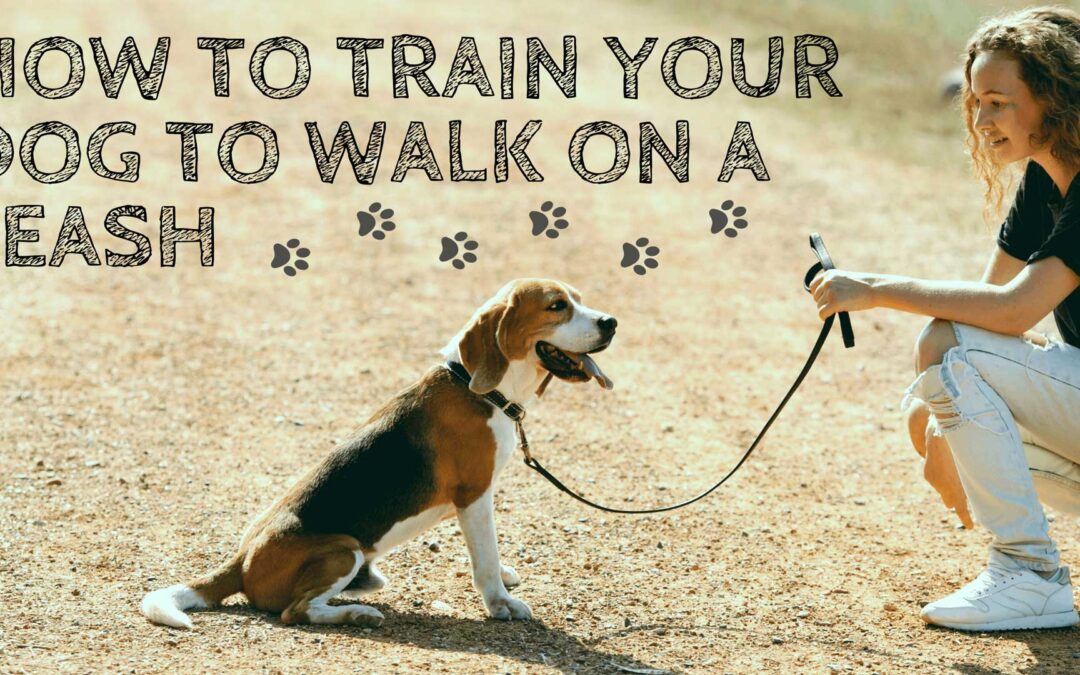It’s easy to get lost in the idea of all the good things that bringing a dog into your life can bring. But it’s not as if every aspect of dog ownership is a walk in the park — indeed, that’s part of the problem. If you’re going to enjoy public life with your new canine friend, then you’ll need to take the time to teach them how to walk on a leash. It doesn’t matter whether you have a German Shepherd or a chihuahua; they all have to learn! This can sometimes feel like an overly complicated task, especially if you’ve never owned a dog before.
But if there’s one thing to know, it’s that it’s (nearly) always possible to teach a dog commands. In this blog, we’re going to look at how to train your dog to walk on a leash. Follow these tips, and it won’t be long before your dog is walking by your side!
Invest in the Right Equipment
When you’re learning how to train your dog to walk beside you on a leash, it’s important to make things as straightforward as possible. And that means controlling what you can control. If you have the right collar and leash for your canine, then you’ll be making things much more straightforward. The collar should fit him or her perfectly (too loose, and they may wriggle free; too tight, and they’ll be uncomfortable). The leash should be appropriate for the dog’s size and also be comfortable for you. If you don’t know which collar and leash combo to buy, consult your local pet store — they’ll have an idea of which ones will be right.
Load Up On Treats
People are willing to learn if there’s a motivation for doing so. And dogs are the same. While they might not have an intrinsic motivation to learn this skill, they will respond to a different type of motivation — the lure of delicious food. When you first get started, you can be pretty liberal with the treats. Whenever they do anything correctly, give them the good stuff. They’ll very quickly learn that doing that action leads to something they want. At some point, you’ll wean them off those treats, but they’ll be indispensable in the short term.
Enthusiasm
Dogs respond to emotions. If you’re enthusiastic, then they’ll be enthusiastic. It always feels like dogs are wired for happiness. If they’re given a choice between joy and every other feeling, they’ll usually take joy. So while it’ll be your pet dog that does the majority of the work, you’ll also need to bring some energy too! An enthusiastic attitude can go a long way in all areas of life, including when you’re teaching your dog to walk on a leash.
Coming To You
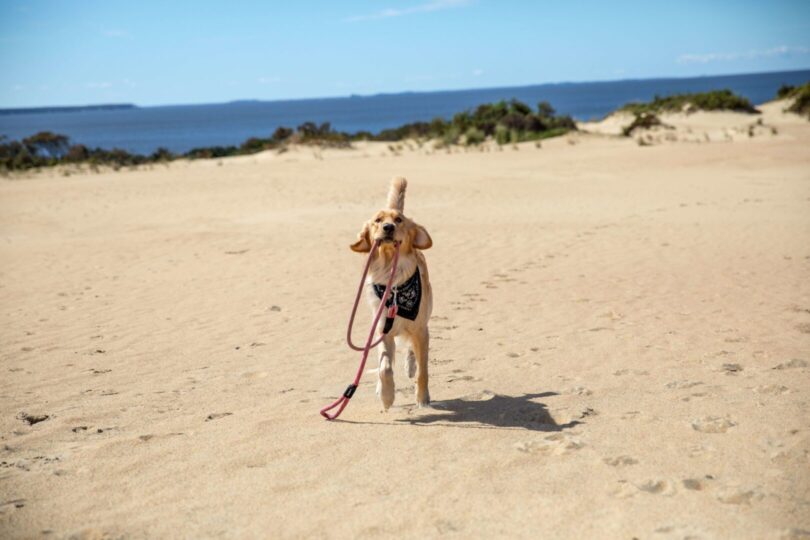
The leash prevents your pooch from running away. But ideally, the dog wouldn’t run away anyway. In any case, there’ll be times when you want to let them off the leash, so they can run free in the great outdoors. But of course, if you’re going to do that, then you’ll need to be sure that they’ll come back to you. For this to happen, the dog will need to associate you with good feelings. You can introduce this concept, which will also have a positive effect on your leash training, by calling your dog to you. You should use treats for this. After each successful recall, take a step back — it’ll help your dog to associate the act with you rather than a specific point.
Start Slow
You’ll need to be patient when you’re teaching your dog to walk on a leash. It’s unlikely that they’ll pick it up at the first time of asking! Remember that while you know what the end goal is, your dog will have no idea. It’s best to keep the sessions short and fun, especially during the first few times. Indeed, it’s best to end the session while your pet is still having fun rather than when they’re mentally and physically exhausted.
In the Home
In the early days, it’ll be best to practice at home. It won’t be worth heading outside anyway because when you first start, you’ll just be trying to walk a handful of steps with your dog by your side. We’re talking minutes here. But there are other reasons to start inside, too. Your dog will need to focus entirely on the task at hand. Walking with a leash on might seem a simple enough task for us, but it won’t be for your dog, especially if they’re a puppy! When they’re at home, there’ll be less going on around him or her, so they’ll be less likely to become distracted.
Going Outside
Of course, you don’t need to know how to train your dog to walk nicely on a leash inside. The real challenge is getting them to walk next to you when you’re outside; that’s where it’ll count the most! You’ll likely notice that he or she isn’t as good at walking on a leash when you first get outside. And that’s because they’ll have to deal with all the sights and smells that the great outdoors can bring. Keep these sessions extra short; a walk around the block is fine for the first time. When it looks like they’re becoming distracted, use your cue and reward them when they respond.
Stop The Pulling
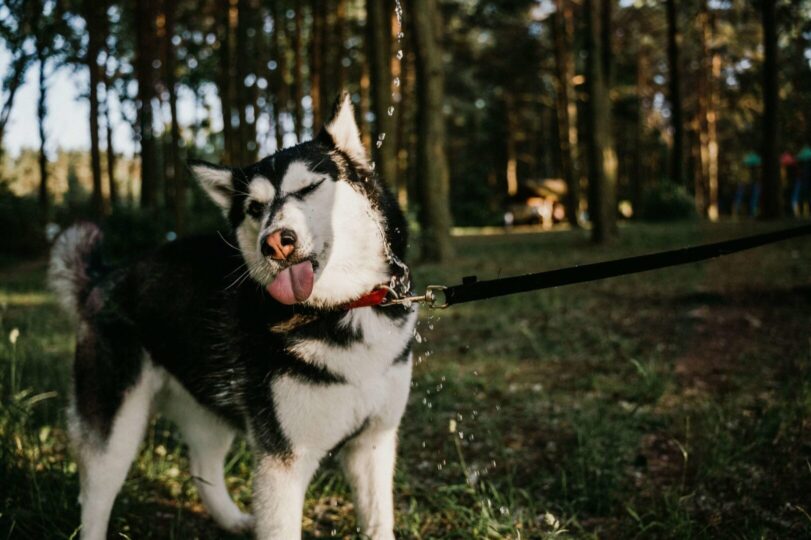
Unless your dog is a natural at walking on the leash, then you’ll have to contend with some pulling in the early days. Indeed, you’ll quickly learn that what you need to know is how to train your dog to walk on a leash without pulling. The key, in the early days, is not to become too bothered by the pulling. Instead, focus on rewarding any time when they’re not pulling. If the leash is slack, then hand out a treat. If your dog insists on pulling, then try a different approach. You need your dog to know that pulling on the leash will not help them. You can do this by standing still when they continue to pull. They’ll be a little confused, but eventually, they’ll come back to you — and when they do, it’s time for, yep, another treat!
There are a few common issues when it comes to pulling. Thankfully, many of them have a solution.
One such problem is a dog who is simply determined to pull. They’ll ignore all the cues. In this case, standing still might not work — they’ll just keep on pulling away! Instead, turn around and walk in the opposite direction. Your dog will be confused, but they’ll go with you — and when they do, be sure to give plenty of encouragement.
If all of your training methods fail to stop the problem of pulling, then you can look at getting a new collar/leash — they could be the issue. And if that doesn’t work, then you might need the services of a professional dog trainer. Some canines can be tricky!
Intentional Walking
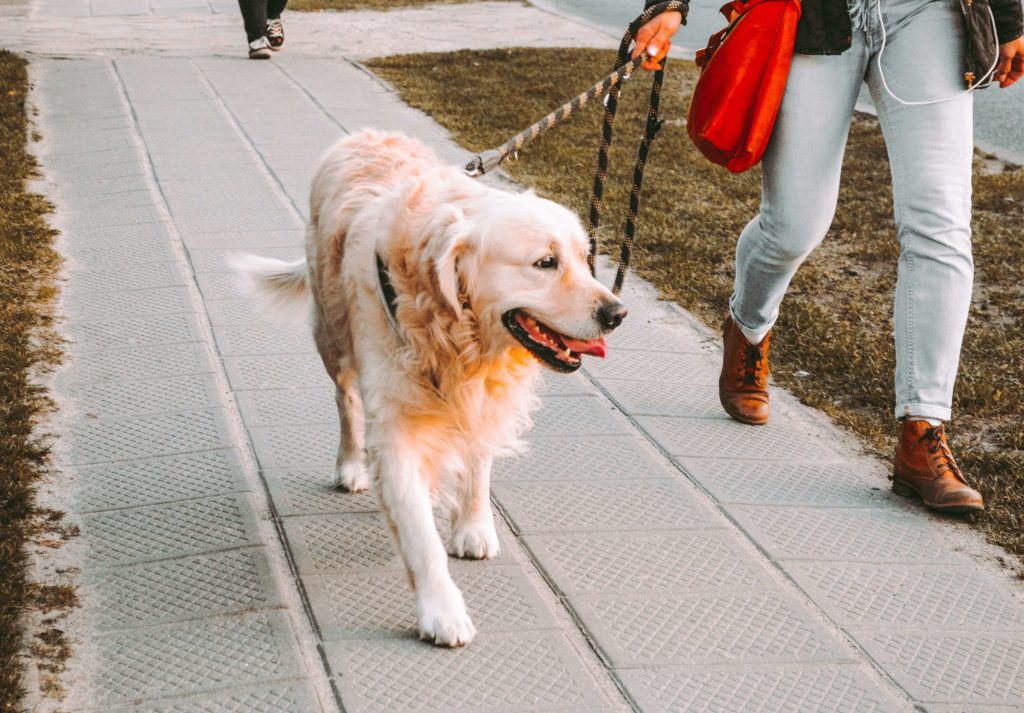
There’ll come a time when you’re able to go for a gentle stroll with your dog. You’ll stop to meet other dog owners, let your dog explore, and so forth. But that’s not something that can happen when your dog is first learning to walk. It’ll take time. If we can call those types of walks “strolls,” then we can call the ones when your dog is learning to walk on a leash “intentional walks.” That means that the walk is more structured. Rather than going with the flow, you’ll be intentionally walking from one place to the next, without any temporary breaks (other than bathroom breaks). With you in command, there’ll be no doubt about who the leader is!
Understand Your Dog
There’ll come a time when you’re able to go for a gentle stroll with your dog. You’ll stop to meet other dog owners, let your dog explore, and so forth. But that’s not something that can happen when your dog is first learning to walk. It’ll take time. If we can call those types of walks “strolls,” then we can call the ones when your dog is learning to walk on a leash “intentional walks.” That means that the walk is more structured. Rather than going with the flow, you’ll be intentionally walking from one place to the next, without any temporary breaks (other than bathroom breaks). With you in command, there’ll be no doubt about who the leader is!
Give It Time
And talking of time — a little bit of patience can go a long way! It’ll take time for your dog to understand what’s being asked of them. If you get annoyed and frustrated, then you’ll only make the problem worse, both for you and your dog. Recognize that it’s a process, and you’ll be able to notice the small improvements that happen each training session.
Have Fun With It
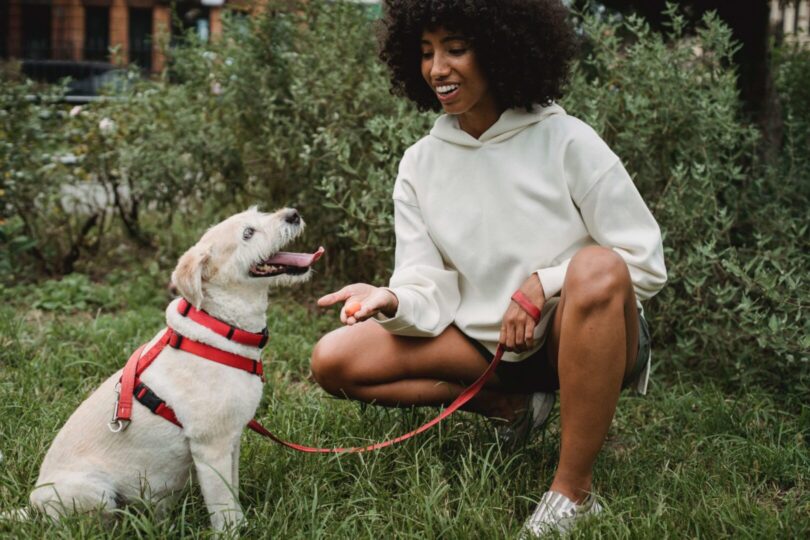
And finally, remember that attitude counts for a lot! This might not be the most fun aspect of having a dog, but that doesn’t mean that it can’t be fun at all. Enjoy the learning process!
Final Thoughts
If you’re going to enjoy all the benefits of having a dog, then you’ll need to know how to train your dog to walk beside you on a leash. If you don’t, then every excursion into the outdoors will be a lot more stressful than it needs to be!

